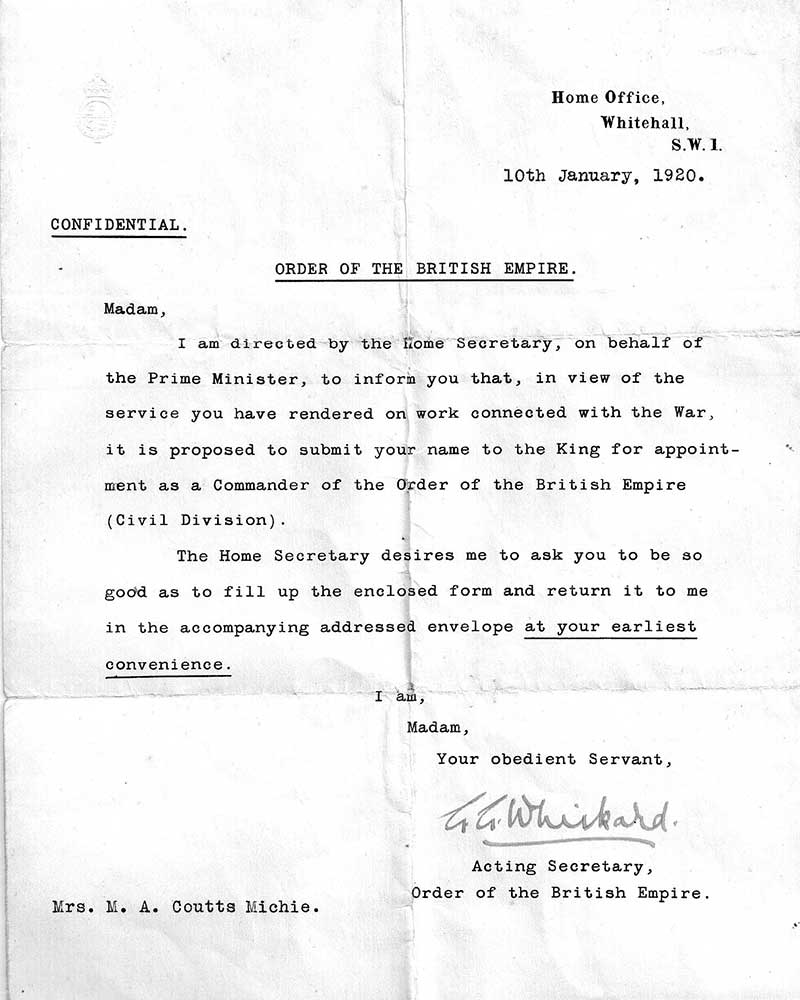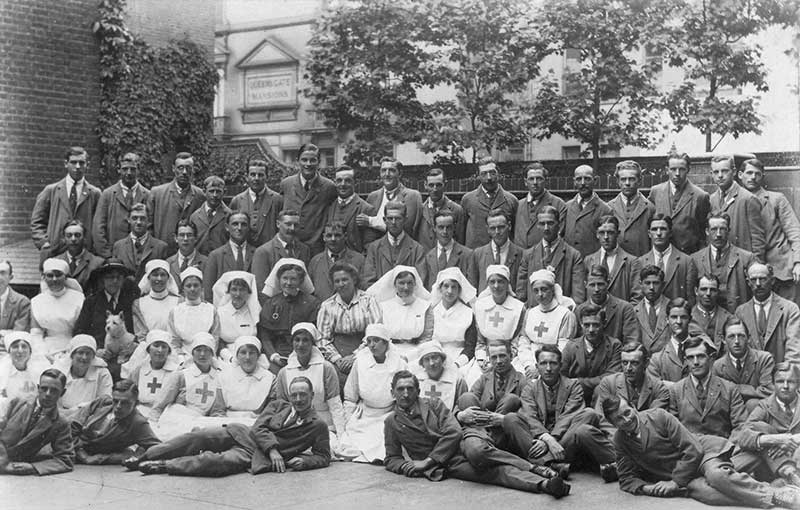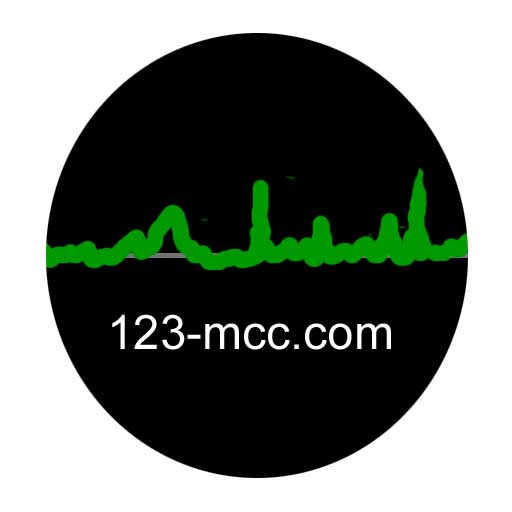
Angus and Rosemary's Miscellany
of Malvern - Other Resources
|
History menu > About the WWI Red Cross 'Michie Hospital' at 184 Queens Gate LondonThis page is also linked from the Photogallery Introduction
The Michie Hospital only existed for three years and few traces remain, except for photos and papers in the archives of the British Red Cross Museum. The photo below, from a family album, shows hospital beds and a large Christmas tree. It was taken in December 1917 when Great Britain was still at war with Germany and a Mrs Mary Michie had loaned her large house at 184 Queens Gate, London, for use as a Voluntary Aid Detachment hospital for wounded soldiers. It was affiliated to the Queen Alexandra Military Hospital and initially run by a Mrs Isaacs. Note the electric lights which were then a fairly new invention. Electricity may have been supplied by the local Kensington and Knightsbridge Electric Lighting Company.
A ward in the Michie Hospital at Christmas The hospital was locally known as the Michie Hospital after its owner. On the Christmas tree can be seen the flags of the allied nations including that of Japan, which was then an ally. The hospital, which was opened by Queen Alexandra in 1916, had 168 beds, and it is said that of about 2,800 patients admitted only 5 died. Some more photos of the Michie HospitalThese images are taken from small poor quality prints, but we hope they will still give some impression of those days during the 'Great War' a century or so ago. The first photo (see below) is of a ward of the hospital. Note the potted plants and hospital dress.
Alexandra ward and patients of the Michie Hospital The photo below shows a group of men standing at the entrance to the hospital. The woman in the white blouse is probably Mrs Michie. One man is holding a child.
At entrance to the Michie Hospital The photo below shows a vehicle at the entrance; you can just make out the patients in the front and back of the car. Possibly a rare sight in those days when few cars were on the road.
Car outside the Michie Hospital In the picture below are some of the Red Cross nurses who looked after the patients.
Nurses at the Michie Hospital The photo below shows men being cared for by the nurses. Note the very basic facilities compared to today. The man seated on the right looks as though he has his leg in a special bath.
Patients and nurses at the Michie Hospital The church on the roofThe spiritual needs of the patients were not ignored, and a small wooden hut was erected on the roof of the Michie Hospital to serve as a chapel or oratory where people could pray; it is thought to have had about a dozen seats.The photo below shows Mrs Michie and a priest outside the little chapel. Another website about the Lost Hospitals of London suggests that the chapel was dedicated by the Bishop of London on 7th March 1917. The Bishop of London at that time was Arthur Foley Winnington-Ingram who was born Worcestershire, 1858, and died not far from Malvern while staying in retirement with his niece Constance Mary Adeline Grice-Hutchinson (1886 - 1962) at The Boynes, Upton upon Severn on 20th May 1946. Arthur's maternal grandfather was Henry Pepys, Bishop of Worcester. Arthur had worshipped at the Church of the Good Shepherd, Hook, while staying with his niece at the Boynes and presented the brass altar cross to the Chapel. The Boynes had also been used as a Red Cross Hospital during the 1914-1918 war, as had Ashfield and other establishments in Malvern. The Boynes is now a care home for the elderly.
The chapel on the roof of the Michie Hospital Priest and Mrs Michie After the warAfter the war Mrs Michie was presented with a framed photograph by the staff of the hospital (she is not in the picture herself). The image below shows a copy of the photograph and an enlargement of the small brass plaque which had been fixed to the bottom of the frame.
The plaque reads: Presented to Mrs Coutts Michie, as a mark of affection and esteem, from the staff of her hospital, Christmas 1918 The story has been passed down that Australian soldiers were particularly welcome at the house which was a short distance from South Kensington tube station. Scottish surgeon Lawrie Hugh McGavin CBE FRCS worked at the hospital. Like Mrs Michie, he had links with Australia as both his wife and mother-in-law were born in Australia. He also had strong links with the army as he had once been in the Dragoon Guards and his brother-in-law was a senior army officer. You can read more about his family by clicking here. 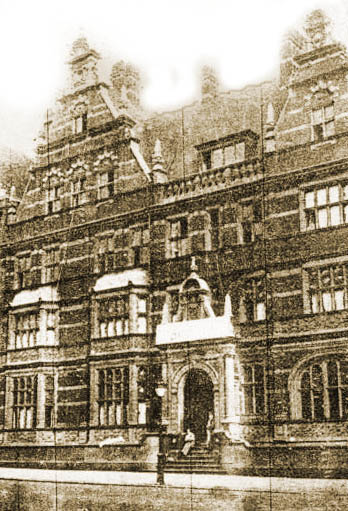
Mrs Michie, amongst numerous other recipients, received the CBE in 1920 and died in 1945 aged 88 years. Sadly two of her Australian nephews were amongst the 62,000 Australian soldiers killed in the Great War. The house was not hit in Zeppelin attacks on London, but later in the Second World War, the house (shown opposite) was badly damaged by enemy bombing on the night of 19th February 1944 when a bomb hit 184 and 185 Queens Gate and the gas main caught fire. Eight people died. The site of the building is now occupied by part of Imperial College. 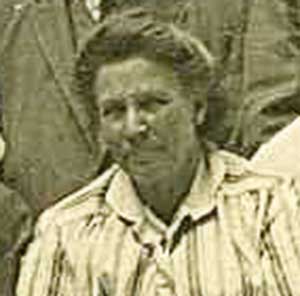 Mrs Michie, born in 1857, was the daughter of Nottinghamshire coal miner William Smith; she had emigrated to Australia with her family in the 1870s, returning to London in the 1890s. She married, thirdly, in 1908, the Scottish painter James Coutts Michie (1859 - 1919), an artist of the Aberdeen school. Descendants of her family still live in Australia.
More about the history of this and other hospitals can be found in the archives of the British Red Cross Museum in London.
Letter informing Mrs Michie of CBE She received this a few days after the death of her husband
Mrs Michie in striped shirt with patients and nurses outside the Michie Hospital Courtesy of the archives of the British Red Cross
This article was first published on our old website 123-mcc.com |
|
Last updated 27th October 2018 |
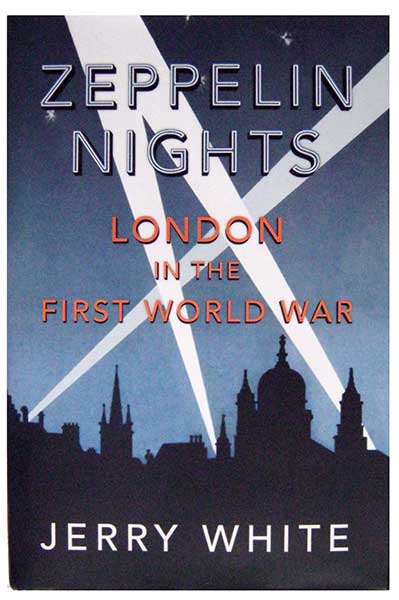 Jerry White's book Zeppelin Nights, published in 2014 by
Bodley Head, describes the impact on London and its people of the First
World War, 1914 - 1918. In 1915 London began receiving large numbers
of wounded from the western front and beyond. However in July 1916
this became a flood as huge numbers of casualties were experienced during the Battle of
the Somme and it was at this time that The Michie Hospital came into
existence.
Jerry White's book Zeppelin Nights, published in 2014 by
Bodley Head, describes the impact on London and its people of the First
World War, 1914 - 1918. In 1915 London began receiving large numbers
of wounded from the western front and beyond. However in July 1916
this became a flood as huge numbers of casualties were experienced during the Battle of
the Somme and it was at this time that The Michie Hospital came into
existence.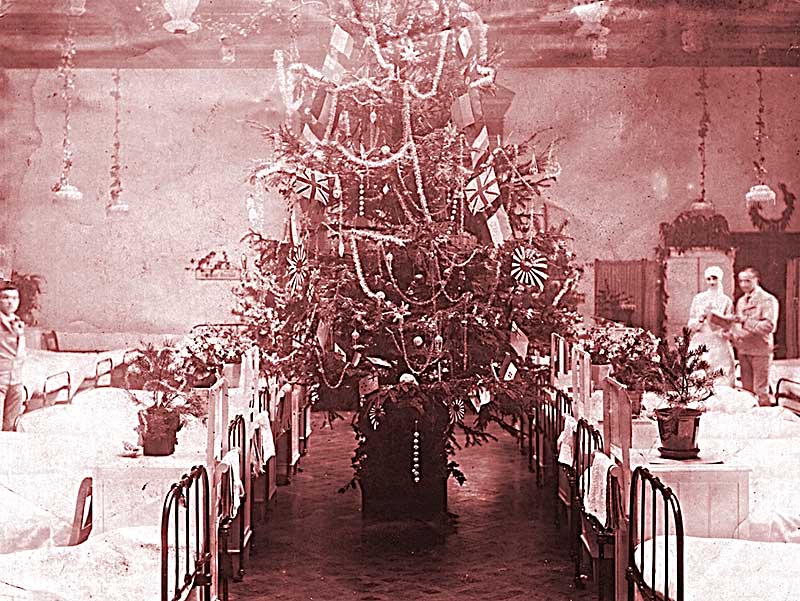
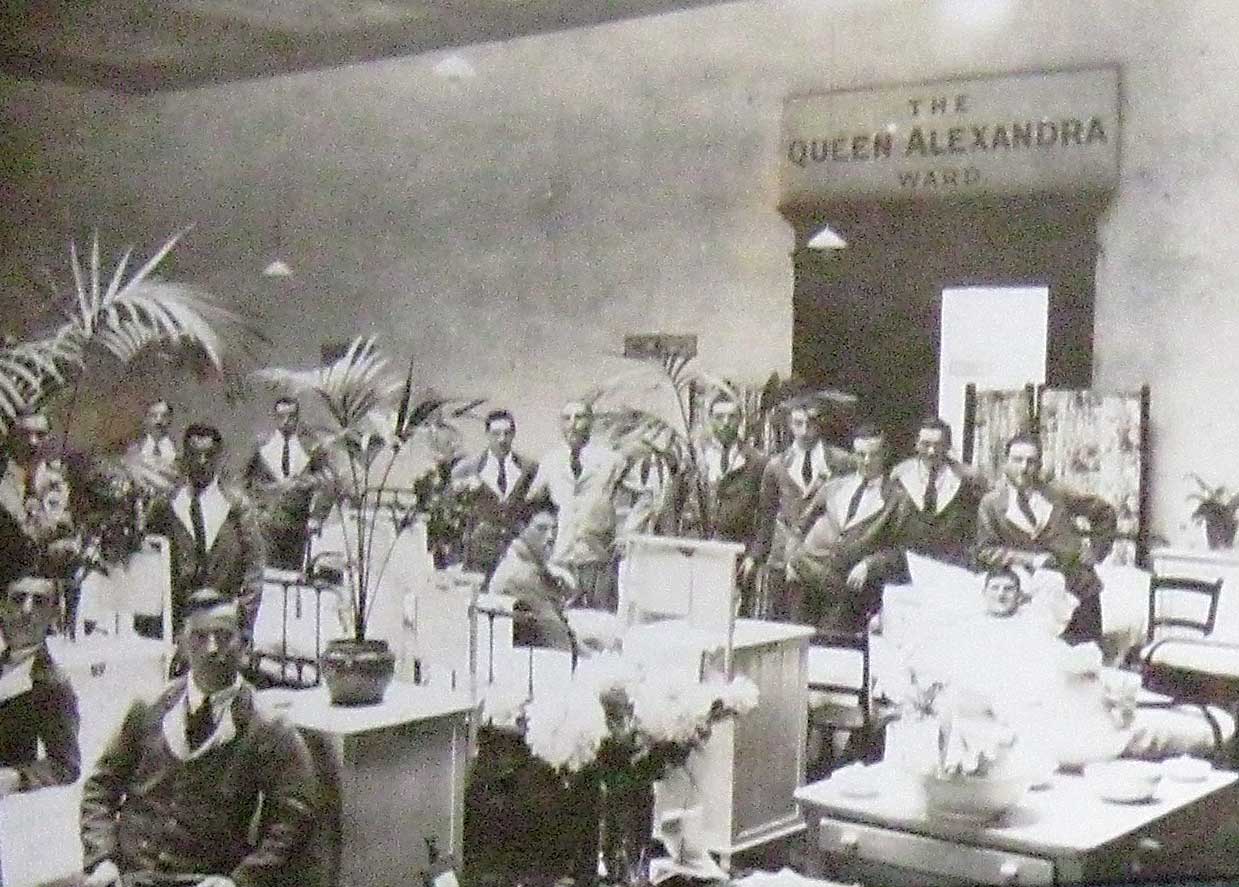
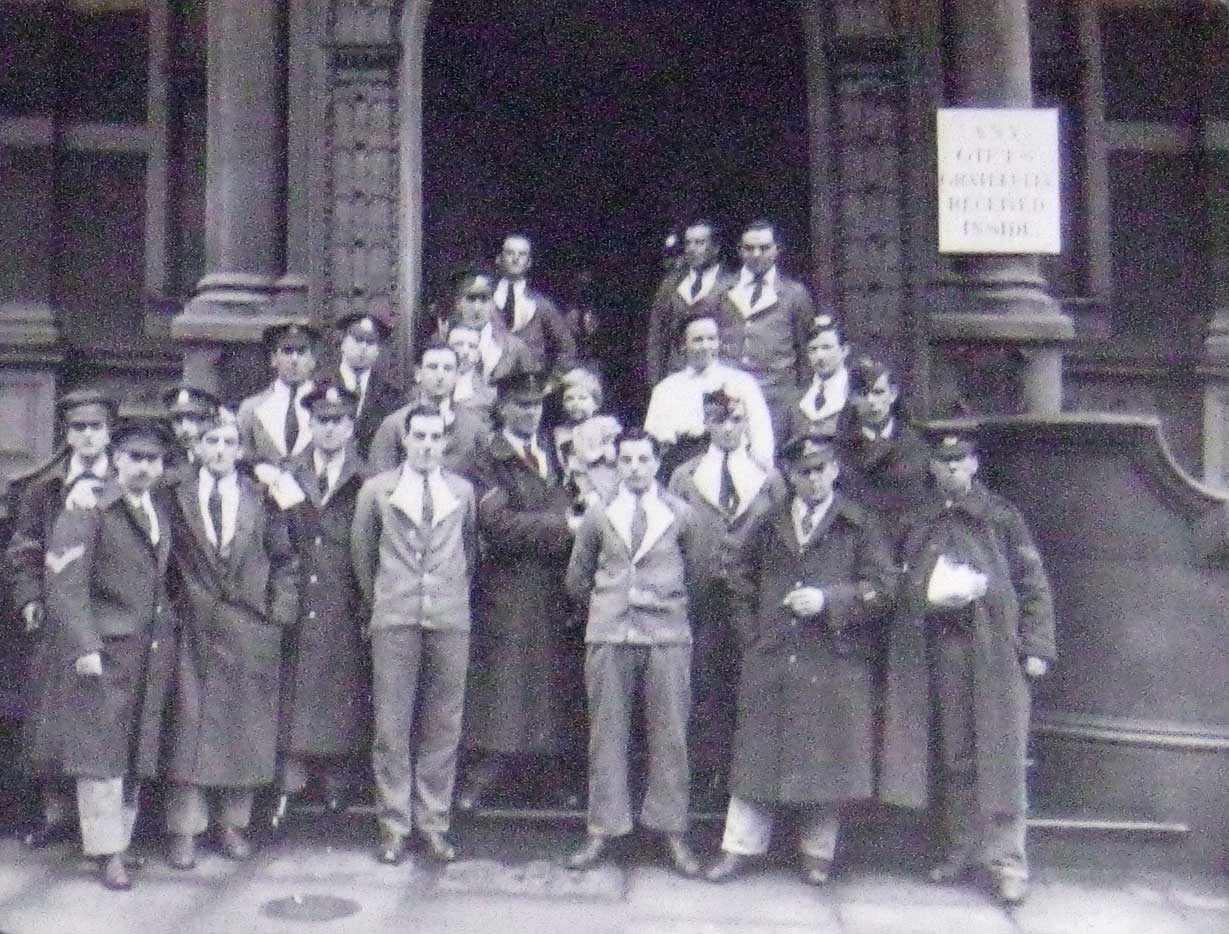
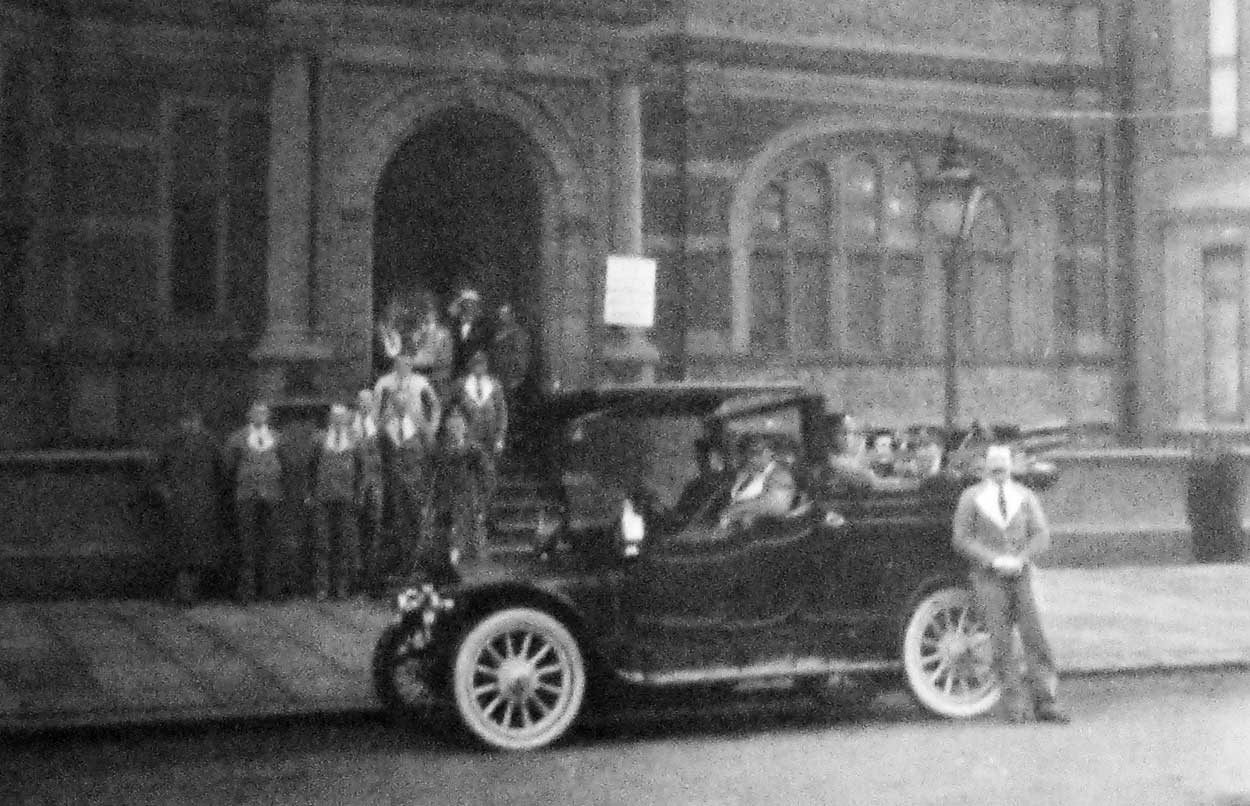
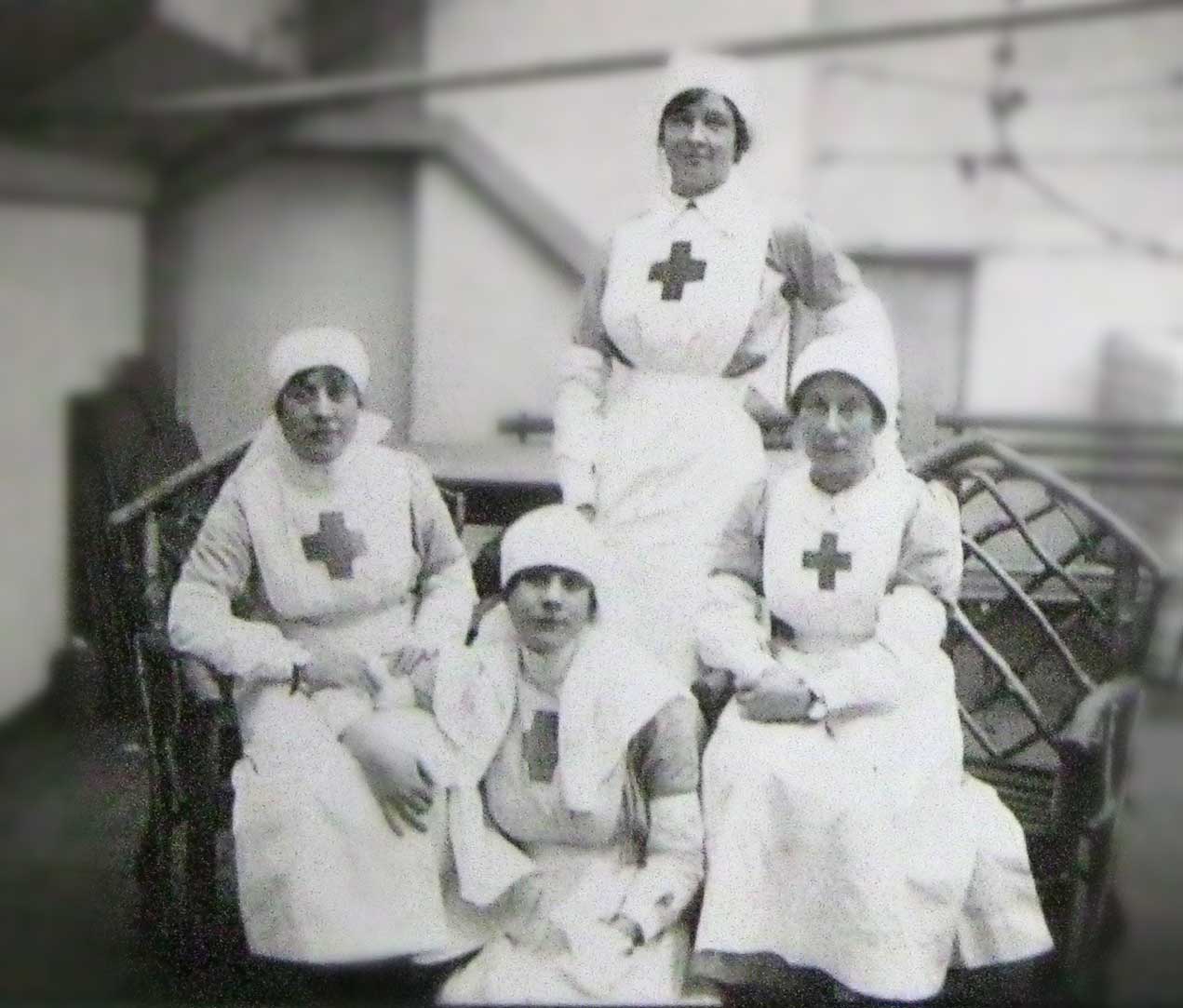
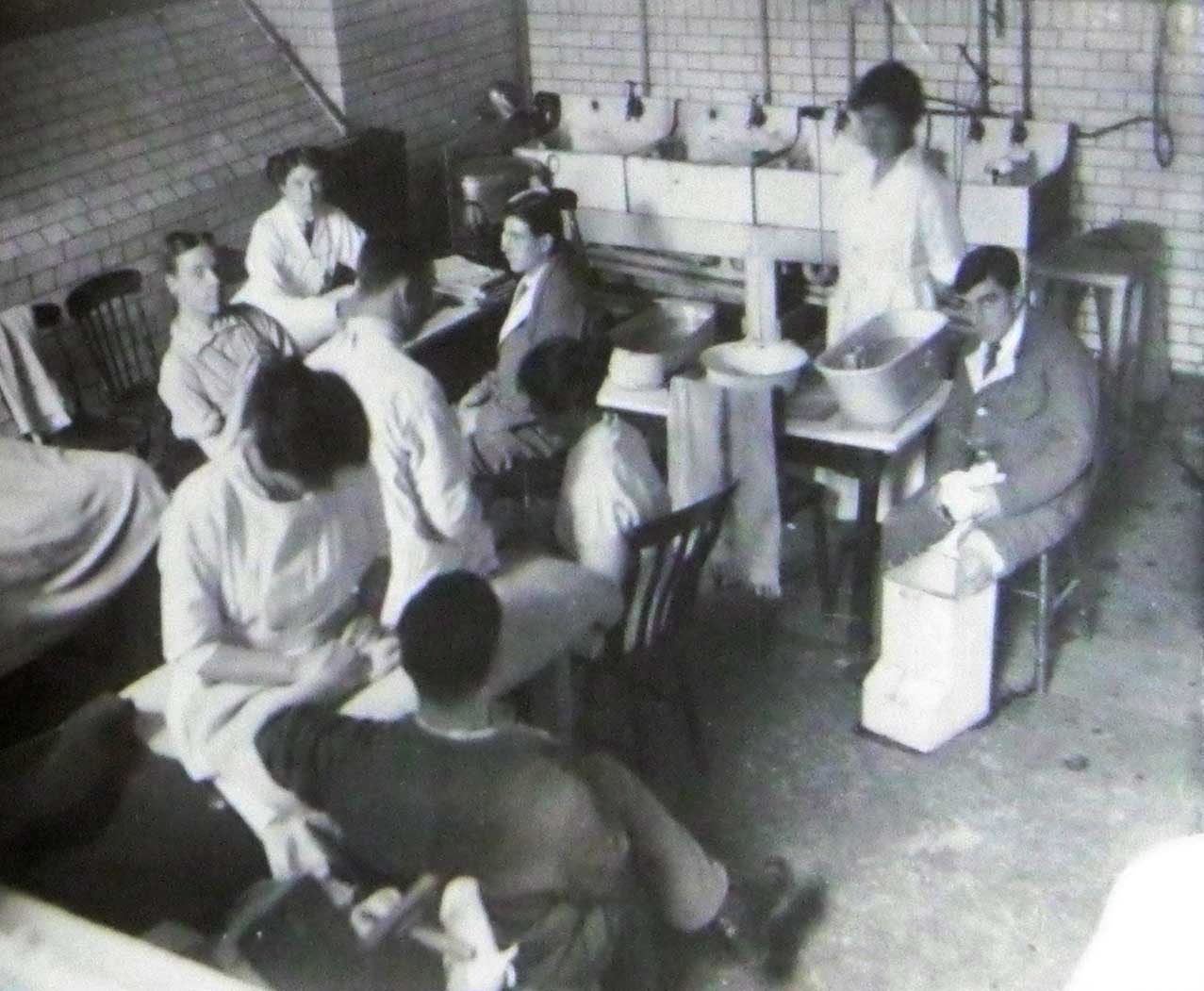
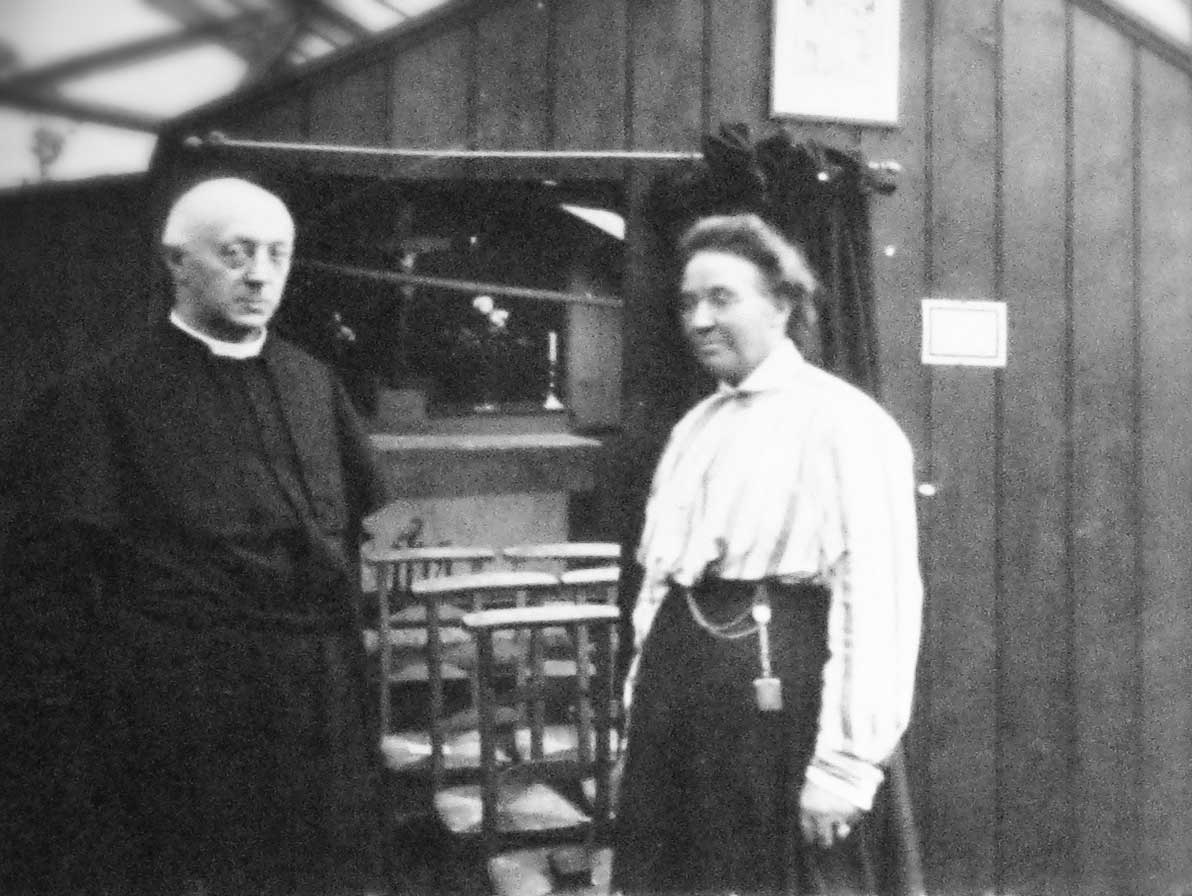
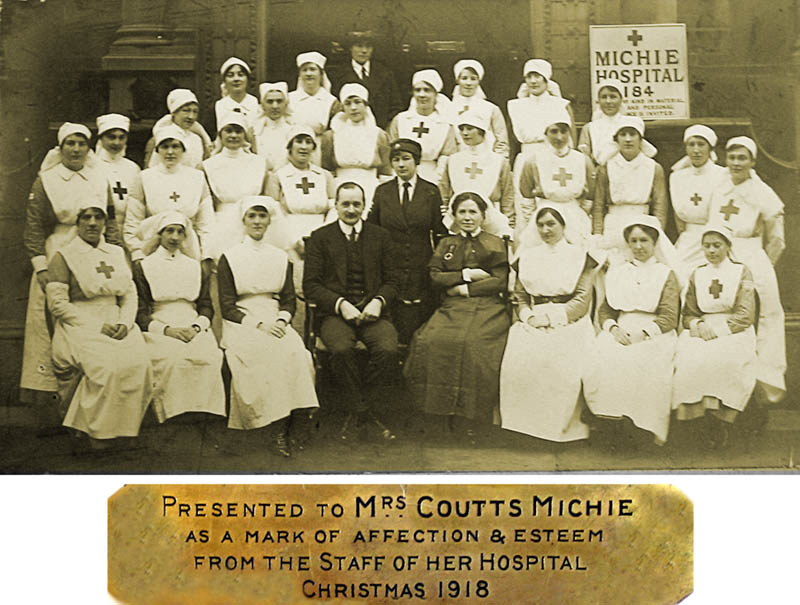
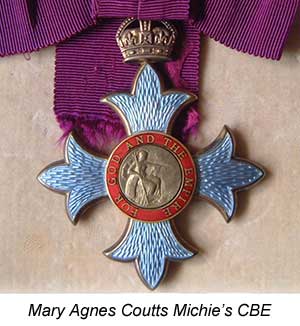 The Michie Hospital was just one of many establishments called upon to treat
approximately 2 million British Empire wounded.
The Michie Hospital was just one of many establishments called upon to treat
approximately 2 million British Empire wounded.